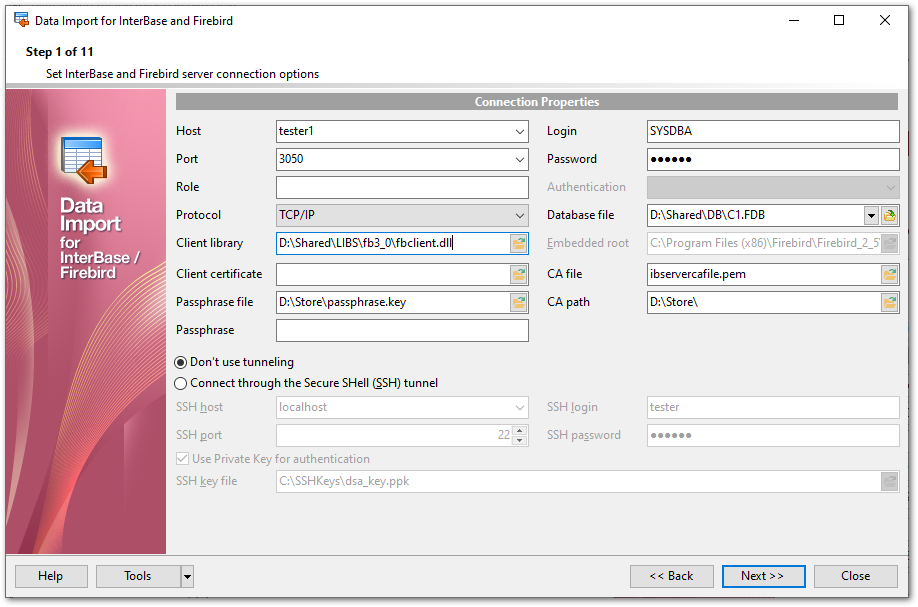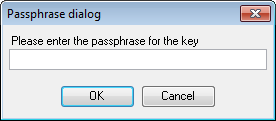Online Documentation for Data Import for InterBase/Firebird
Step 1 - Setting connection properties
At this step you should specify necessary settings to establish connection to the target Interbase/Firebird database.

Connection settings
For connection you should enter Interbase/Firebird host name in the Host field and specify the preferable Network protocol (TCP/IP, NetBEUI, Novel SPX). The Host drop-down list contains the list of already registered hosts. For both types you should enter Interbase/Firebird port to connect through in the Port field.
Afterwards you should specify authorization settings: Login and Password.
The default superuser name is 'SYSDBA' and the default password is 'masterkey'.
You also need to specify the path to the Client library and the path to the Database file (*.gdb for InterBase or *.fdb for Firebird) in the corresponding fields. For successful connection to the server it is crucial to use the appropriate client library - the one that is compatible with the server you are using: gds32.dll for InterBase and fbclient.dll for Firebird. Please note that the client library file must be located on your local machine (e.g. in the directory where the utility is installed). Bear in mind that the path to the database file should be set relatively to the Interbase/Firebird server file system.
If you are using the EMS SQL Management Studio for Interbase/Firebird version of Data Import for Interbase/Firebird then the Select registered database button is available. Click this button to pick a database already registered in the EMS SQL Management Studio in the Select Host or Database dialog.
Please note that you need to have sufficient privileges to be able to write to the destination database on Interbase/Firebird server.
Tunneling settings
To setup the connection via SSH tunnel, input the following values in the corresponding fields:
- SSH host is the name of the host (IP address) where SSH server is running
- SSH port indicates the port where SSH server is activated (default is "22")
- SSH login stands for the user on the machine where SSH server is running (Note: it is a Linux/Windows user, not a user of Interbase/Firebird server)
- SSH password is the Linux/Windows user password
![]() Use Private Key for authentication
Use Private Key for authentication
If the SSH encryption is enabled on the SSH server, a user can generate a pair of cryptographic keys (the Private key and the Public key). The Public key is placed on the SSH server, and the Private key is the part you keep secret inside a secure box that can only be opened with the correct passphrase (or an empty string as the passphrase). When you wish to access the remote system, you open the secure box with your passphrase (if any), and use the private key to authenticate yourself with the Public key on the remote Linux computer.
SSH Key file
Specify the location (the secure box) of the Private key file on your local machine.
Supported Private Key file formats are:
OpenSSH
Putty
SSH.com
Note that you need to trust your local machine not to scrape your passphrase or a copy of your Private key file while it is out of its secure box.

If you get any difficulties connecting to the database, it can be useful to look through FAQs.
NOTE: The Tools button gets access to saving/loading import templates or adjusting program Preferences.
When you are done, press the Next button to proceed to the next step.



































































